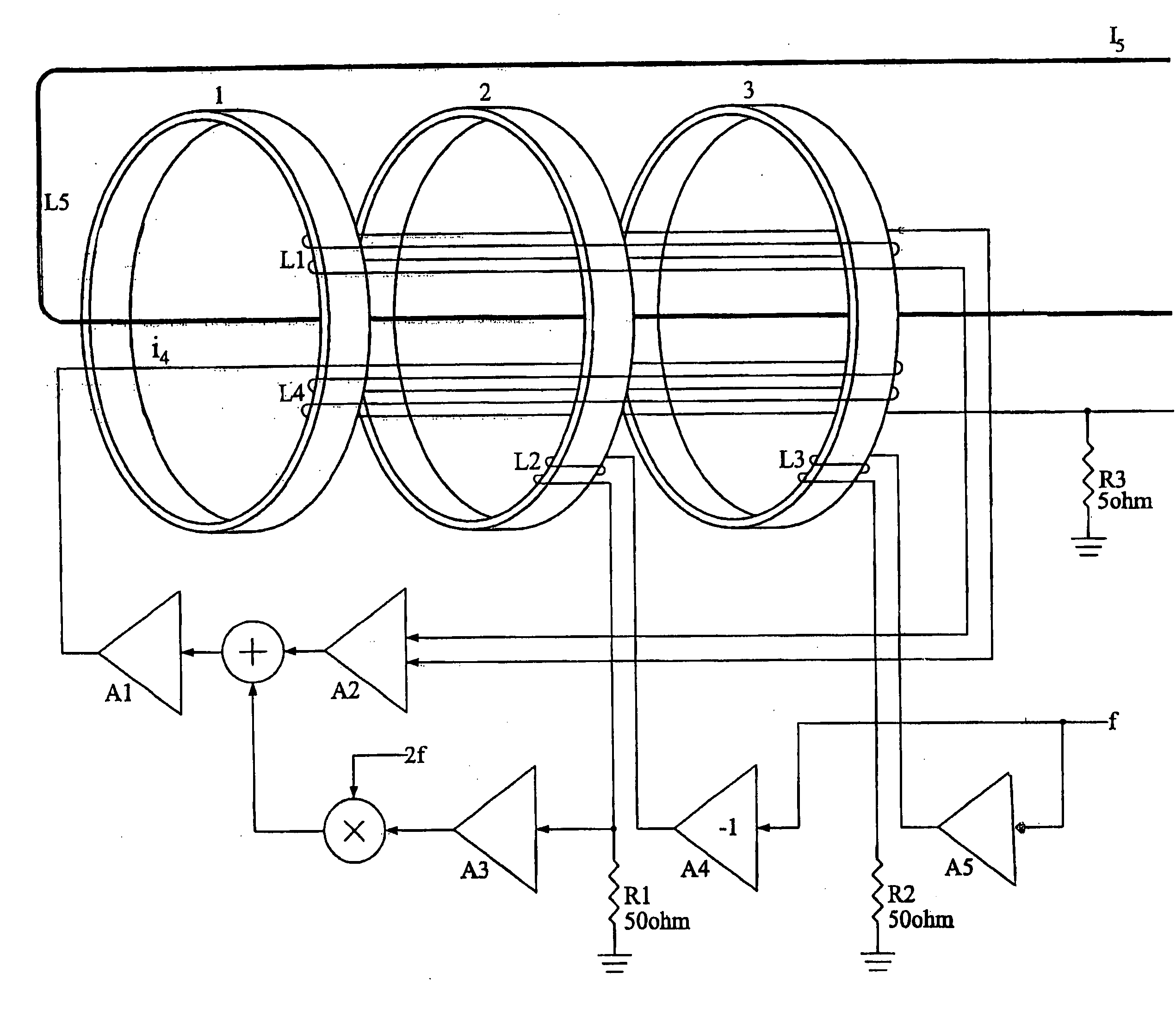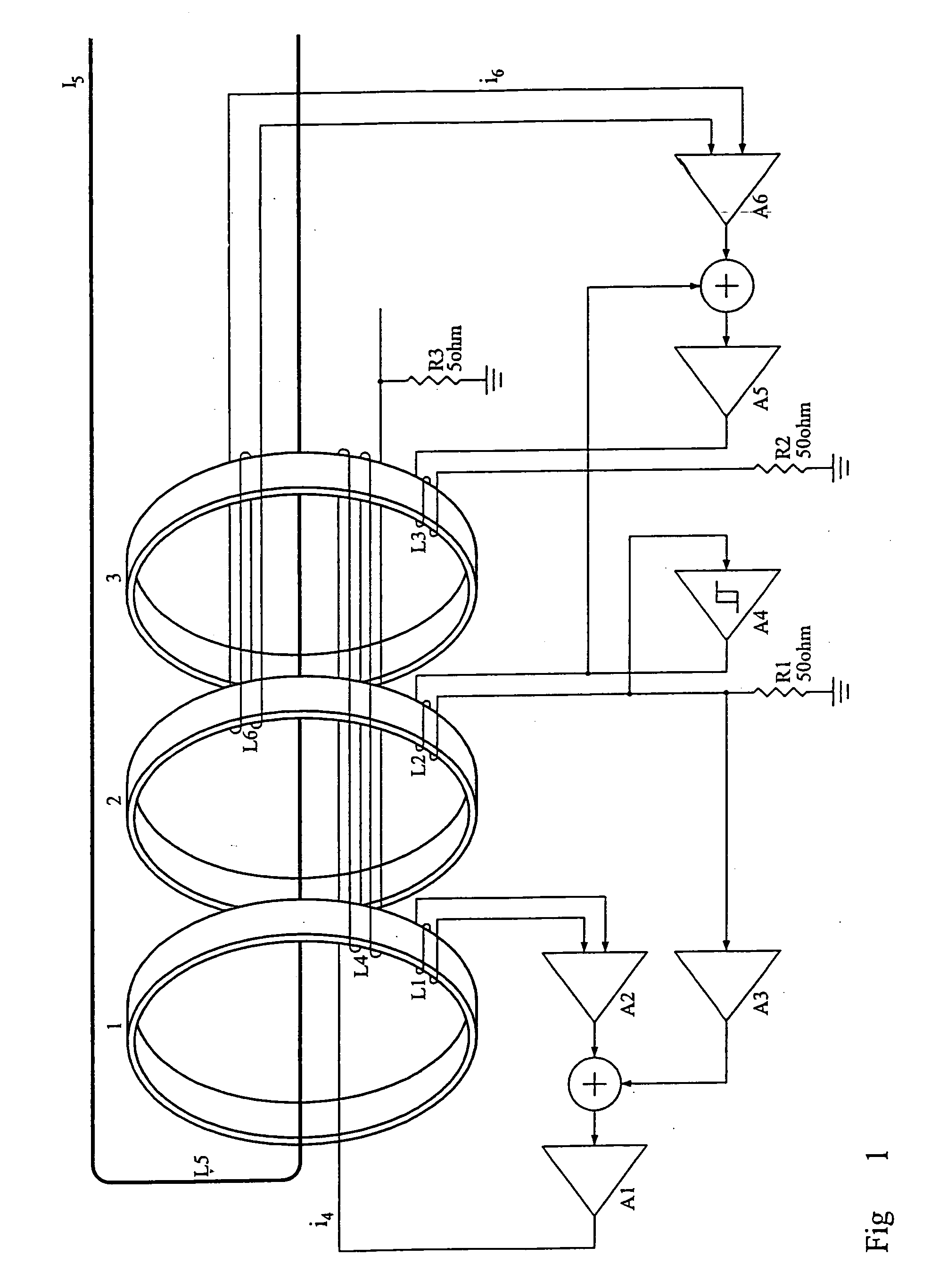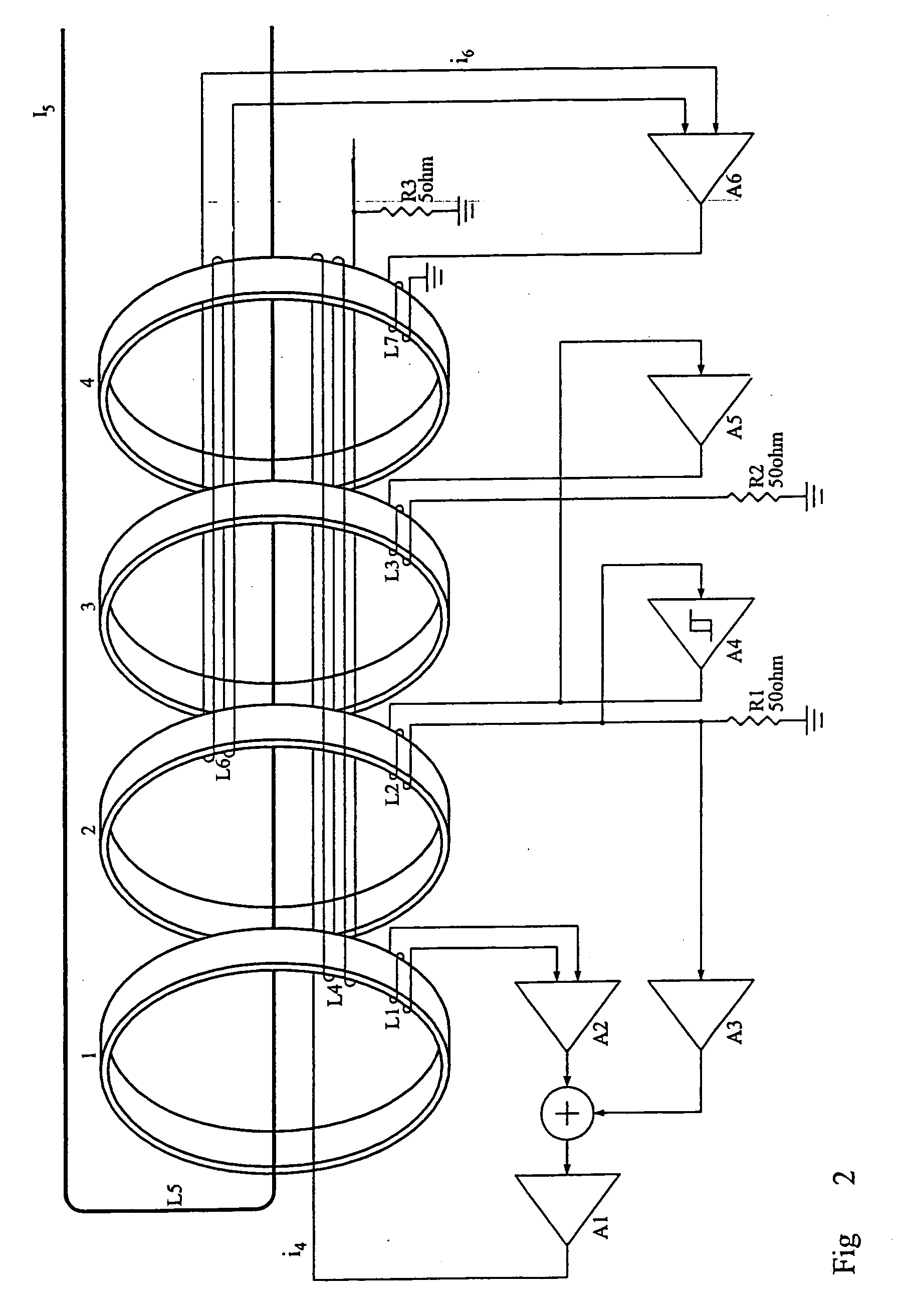Detector circuit to be used for measuring current
a current measurement and current technology, applied in the field of current measurement circuits, can solve the problems of destroying effect, unable to compensate for alternating current, and inability of the magnetic integrator to handle dc and very low frequencies, so as to reduce parasitic capacity, undesirable capacitive current between the windings is significantly reduced, and parasitic capacity is reduced
- Summary
- Abstract
- Description
- Claims
- Application Information
AI Technical Summary
Benefits of technology
Problems solved by technology
Method used
Image
Examples
Embodiment Construction
[0016] The detector circuit shown in FIG. 1 is to be used for measuring strong currents, and it includes three substantially identical annular cores 1, 2, 3. A main current I5 runs through the three substantially identical annular cores and induces magnetomotive forces which are to be counteracted by a compensating current i4. A modulation signal in form of a square wave signal of a frequency of a few hundred Hz is fed to the windings L2, L3 of two of these cores 2, 3, the square wave signal fed to the winding L2 of one core 2 being inverted relative to the square wave signal fed to the winding L3 of the second core 3. As a result, the two cores 2, 3 are magnetized in antiphase in such a manner that both the unequal and the equal harmonics are substantially compensated for through a coupling via the windings L1, L4 and L5.
[0017] The principle is based on the fact that the average flux in the cores is zero when equilibrium or a balance exists between the fields induced by the main c...
PUM
 Login to View More
Login to View More Abstract
Description
Claims
Application Information
 Login to View More
Login to View More - R&D
- Intellectual Property
- Life Sciences
- Materials
- Tech Scout
- Unparalleled Data Quality
- Higher Quality Content
- 60% Fewer Hallucinations
Browse by: Latest US Patents, China's latest patents, Technical Efficacy Thesaurus, Application Domain, Technology Topic, Popular Technical Reports.
© 2025 PatSnap. All rights reserved.Legal|Privacy policy|Modern Slavery Act Transparency Statement|Sitemap|About US| Contact US: help@patsnap.com



